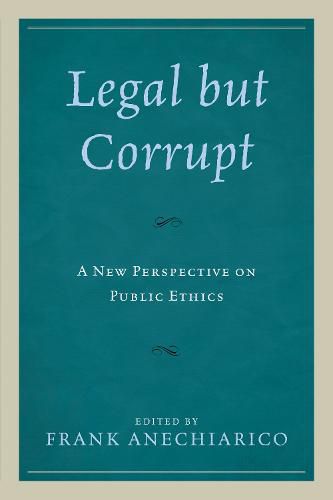Readings Newsletter
Become a Readings Member to make your shopping experience even easier.
Sign in or sign up for free!
You’re not far away from qualifying for FREE standard shipping within Australia
You’ve qualified for FREE standard shipping within Australia
The cart is loading…






Labeling a person, institution or particular behavior as corrupt signals both political and moral disapproval and, in a functioning democracy, should stimulate inquiry, discussion, and, if the charge is well-founded, reform. This book argues, in a set of closely related chapters, that the political community and scholars alike have underestimated the extent of corruption in the United States and elsewhere and thus, awareness of wrong-doing is limited and discussion of necessary reform is stunted. In fact, there is a class of behaviors and institutions that are legal, but corrupt. They are accepted as legitimate by statute and practice, but they inflict very real social, economic, and political damage. This book explains why it is important to identify legally accepted corruption and provides a series of examples of corruption using this perspective.
$9.00 standard shipping within Australia
FREE standard shipping within Australia for orders over $100.00
Express & International shipping calculated at checkout
Labeling a person, institution or particular behavior as corrupt signals both political and moral disapproval and, in a functioning democracy, should stimulate inquiry, discussion, and, if the charge is well-founded, reform. This book argues, in a set of closely related chapters, that the political community and scholars alike have underestimated the extent of corruption in the United States and elsewhere and thus, awareness of wrong-doing is limited and discussion of necessary reform is stunted. In fact, there is a class of behaviors and institutions that are legal, but corrupt. They are accepted as legitimate by statute and practice, but they inflict very real social, economic, and political damage. This book explains why it is important to identify legally accepted corruption and provides a series of examples of corruption using this perspective.